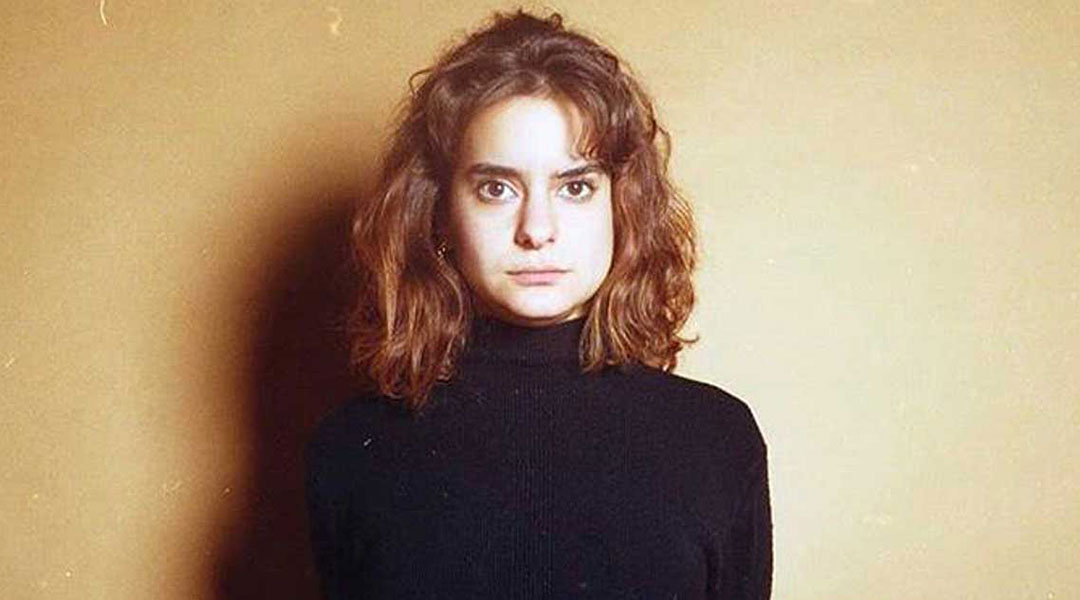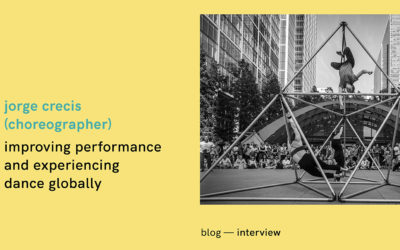Why do we need Cultural Mediation in dance?
Interview with Elena Medina Gil
Cultural Mediation is the area that connects cultural organisations and society. It covers a wide spectrum of practices that aims audience development, more active participation from visitors and a strong community focus. Due to the value of the work of a cultural mediator, we were particularly curious about discovering more about its role in contemporary dance. So, we spoke to the multi-artist and cultural mediator Elena Medina Gil, also known as LA MEGI.
Currently living in Valencia (Spain) and working at Centre del Carme, she tells us more about the power of communication in dance and why do we need to make it more accessible for everyone.
“A strategy that can make people know that dance is accessible by increasing their wish to know more, to experiment dance, to know what’s behind the scenes. But the most important thing is to show it – because many people believe that dance is something that requires a lot of knowledge to be understood.”
Who are you?
I’m Elena Medina Gil, also LA MEGI. I consider myself a communicator who uses different artistic languages such as photography or dance to offer projects of cultural mediation. First of all, I’ve studied Publicity and Public Relations, which helped me understand how to compose a critical viewing of reality. I also studied Theory of Image – Photography and Cinema – and now I’m embracing a Masters in Cultural Mediation and Arts Education. My projects are focused on collectivity instead of highlighting an individual artist. I am also an Artivist!
How do you combine your background in Publicity and in the Arts?
Publicity is presented as a system that builds new realities or satisfies the needs of the population. So, the idea of Publicity can be useful to understand how to create an artistic project in a world of mass media. I believe that the process of creating a publicity campaign is pretty similar to the artistic process, once you always think about your main goal. I believe you can find great ideas in the field of Publicity. There are great campaigns to create positive awareness to society and art is no exception – it’s also communication. Right now, it’s difficult to know if you want to make art that democratizes art and communication, or art for the mainstream market – a market that is competitive and wider – which doesn’t make so much sense for me. I ask myself this question many times but I feel today my background in Publicity helps me keeping my critical spirit alive about my projects and my art, once I want them to be useful to society and not only a product. Thinking about my art as a product scares me, even though I have to use communication and publicity – but only the good principles about creating diverse languages and aesthetics.
You define yourself as an “Artivista”. Can you tell us more about this concept?
“Artivista” (Artivist) is a concept from the ’80s and ’90s. Loads of artists, mainly women, have been falling in love with this concept once it describes an artist who wants to reach everyone, every kind of people. It’s about being active every day to create a wider diversity and equality in the arts. I think this is a very important concept once this term is still distant from reality – and we have to increase diversity. It’s also important to know that this is also a politics position through an artistic career.


What is your contribution to your local dance scene?
First of all, I think the word “contribution” is really important. With my Project at Centre del Carme (Valência), I’m trying to offer a clear tool to make the dance language more accessible. And also to bring back the core role of the body, in order to replace it again to the centre of our lives. The body has been forgotten in terms of senses and perceptions, so this project can offer the opportunity to create a new dialogue between the role of the body and the dance activity in the arts sector. We tend to feel that dance is always something we won’t understand, but it’s important to remember that we are a body that communicates and we need to rediscover its language. This project can contribute to making the language of contemporary dance closer to its visitors.
What is the main role of Cultural Mediation?
The word “mediation” is quite complex to define, once it has multiple meanings. But we can say that cultural mediation talks about the capacity of generating many conversations from different perspectives while understanding an art piece from different points of view, from art history, philosophy or even experimentation. Cultural mediation is about wider the arts’ borders to help improving comprehension and reducing elitism in the art world. It establishes a dialogue between cultures and perspectives. Artistic/Cultural Mediation is about understanding that you never have only one answer: when you see a dance performance, it doesn’t mean only one thing, it means loads of things, which allows an open dialogue about this expression. Mediation is creating new realities from different bodies and contexts. And also to try making a non-hypocrite speech – decolonizing, feminist, ecological – and not about the traditional normative ways of defining art and culture. And this is also very important in Education.
Who is LA MEGI?
It’s like a biography. When I finished my studies in Publicity, I wanted to focus on artistic activity and I started to work on Photography. First, it was my way to express myself and creating images that talk about different ideas and themes while it was a work of experimentation – using different formats such as video. So, I decided to create a different name, to keep myself, Elena, dedicated to working around mediation and communications and LA MEGI as my space of artistic exploration. Sometimes you feel you’re an artist because you’ve studied some specific area… I wasn’t feeling an artist because I’ve studied Publicity but LA MEGI is a part of me who explores artistic languages around the image. The other side – Elena – needs this idea of dialogue around artistic creation. Also, LA MEGI reflects about what does it mean to be an artist nowadays. I defend art as a way of communication and everyone have the right to receive it. It’s not a luxury… It’s a tool to survive our context. That’s why I have Elena and LA MEGI.
From your experience, how do you define the relationship between Art and Communication?
Both of them are with us from the beginning of Human History. They have been walking together and they’re essential to build cultures and to share knowledge through times and generations. I think it’s important to keep a dialogue with the past because it can help you understand the problems that you’re living right now. The essence of communication is a continuum dialogue with yourself, with everyone else, with your ancestors and to create a relationship with the future. That’s why it’s so important to democratize languages because they support your comprehension of reality and being aware of why we’re here, why art exists…. Art exists because it has always been with us.
How to make dance more accessible to everyone?
First of all, there’s the need for creating more projects related to this mission and thinking about their strategy – here’s the relationship with publicity. A strategy that can make people know that dance is accessible by increasing their wish to know more, to experiment dance, to know what’s behind the scenes. But the most important thing is to show it – because many people believe that dance is something that requires a lot of knowledge to be understood. But if we have more conversations about dance, more deep contact with movement… It’s interesting to offer people the opportunity to understand dance based on the body. Otherwise, dance loses its sense. In dance, all bodies are valid to execute movements – after all, those are the basis of our reality.




0 Comments